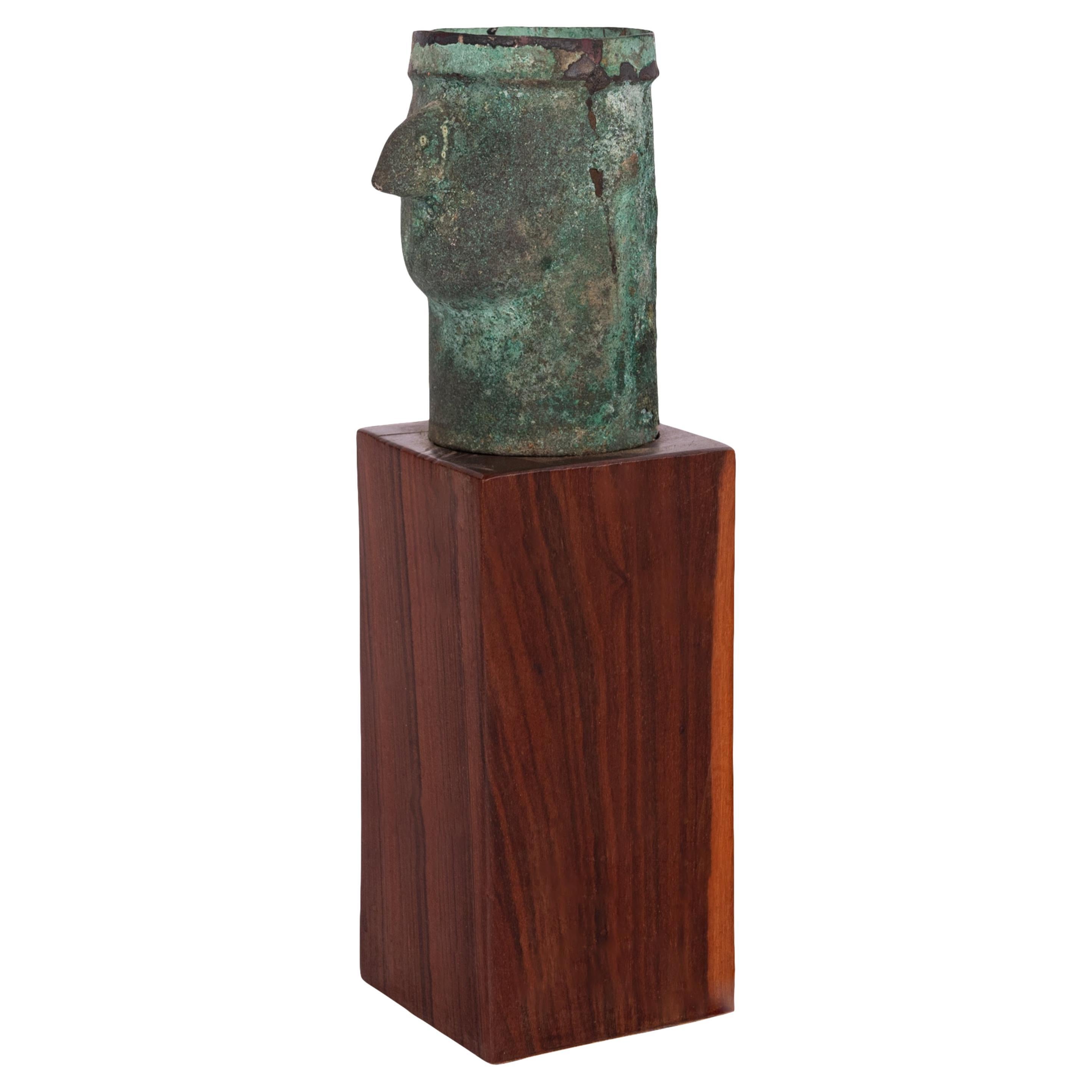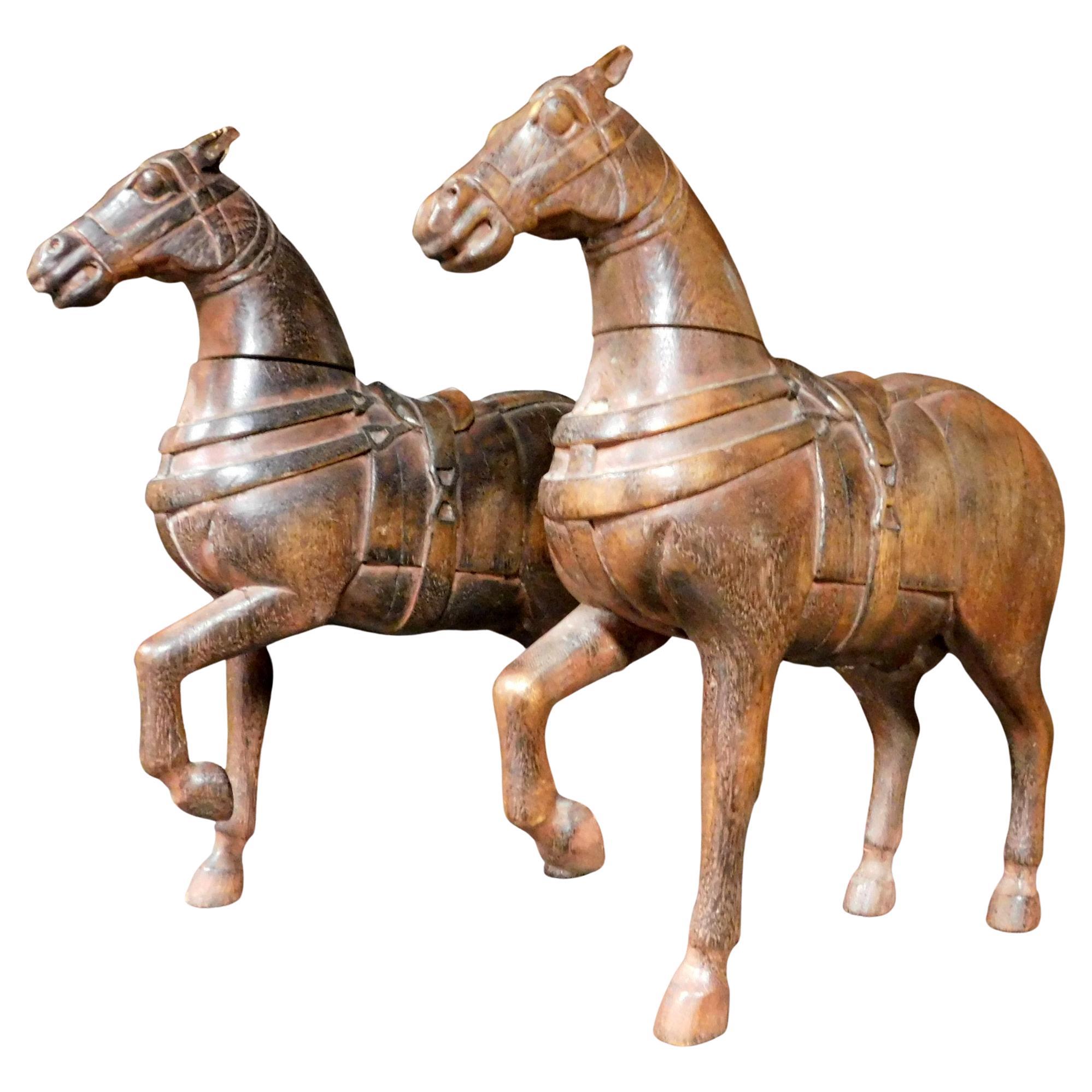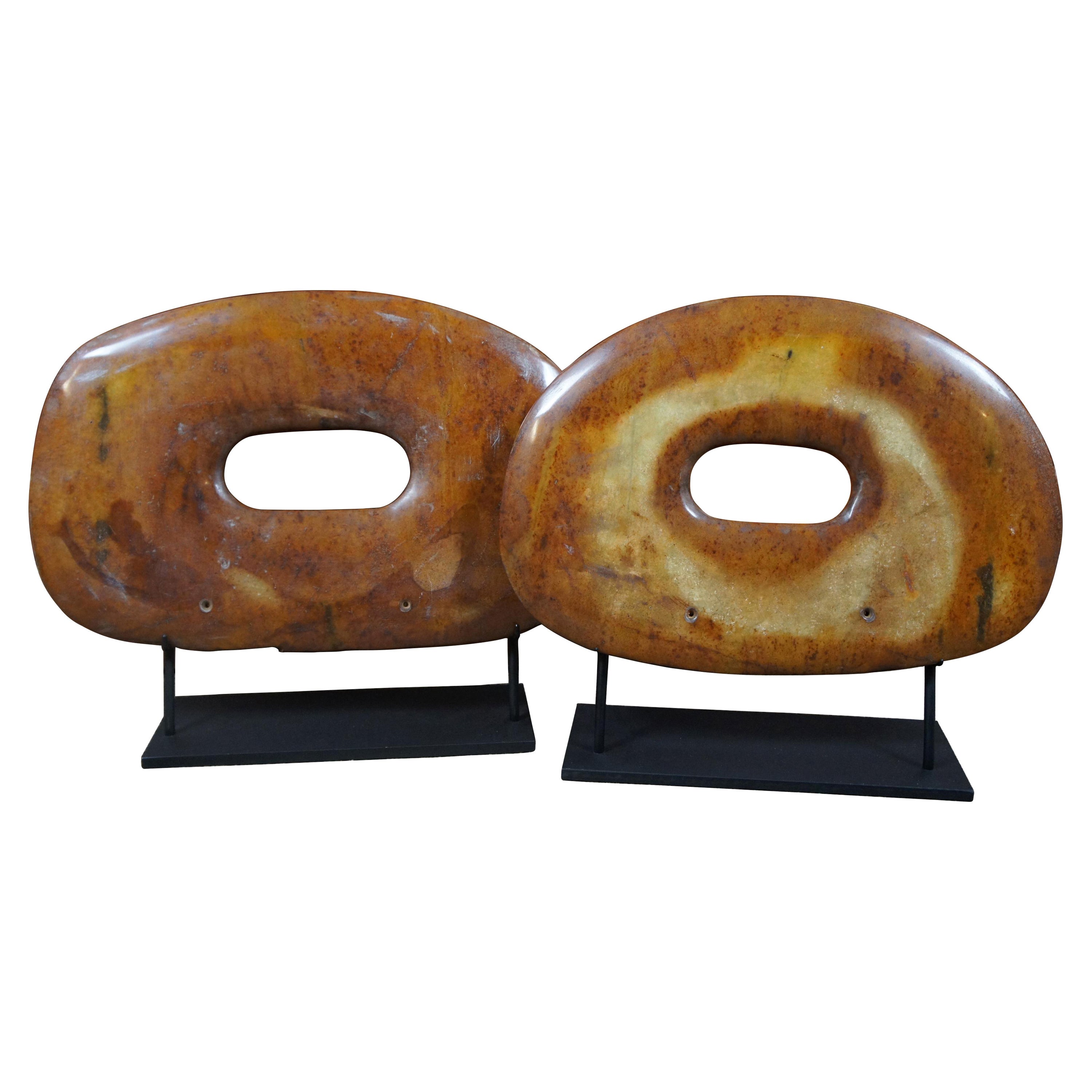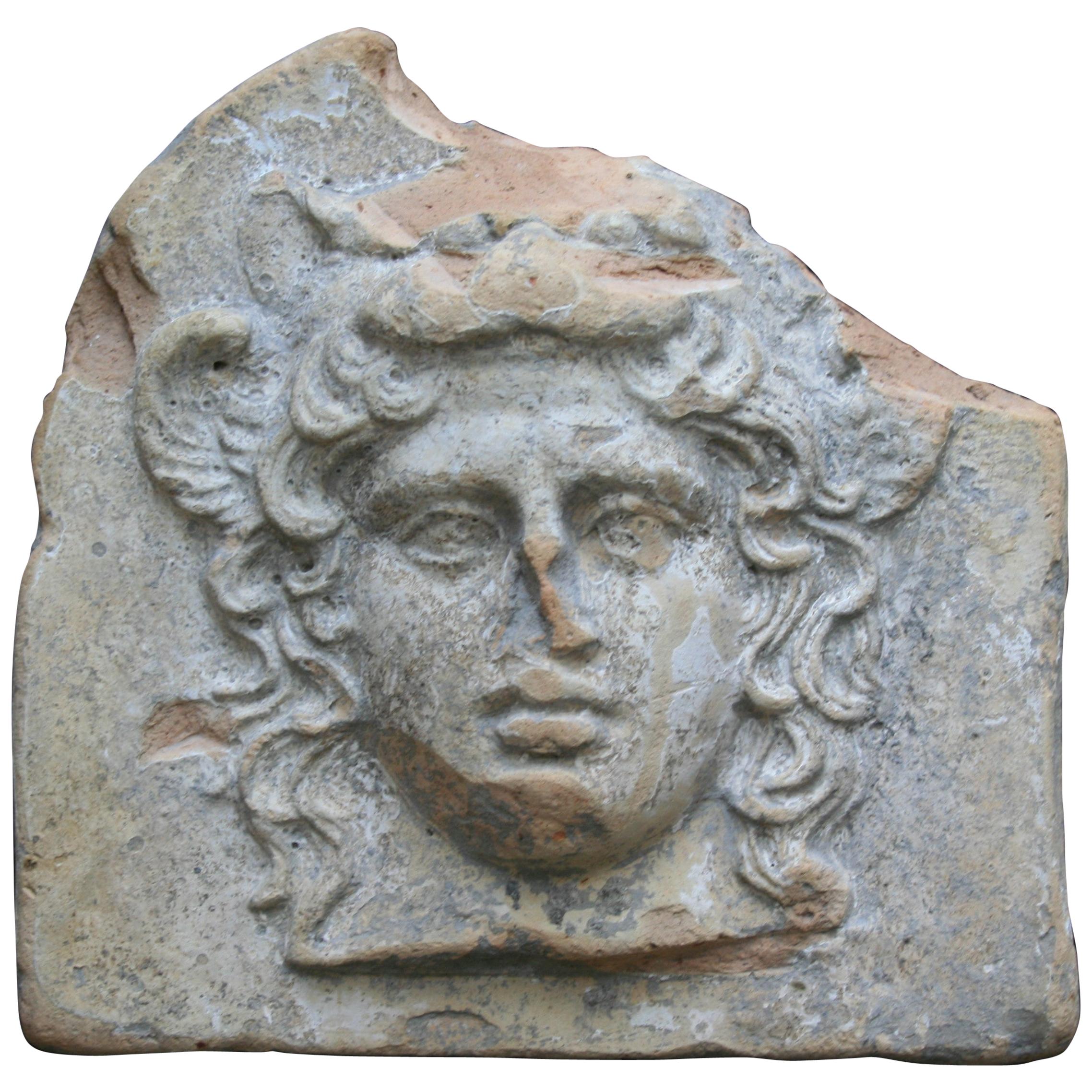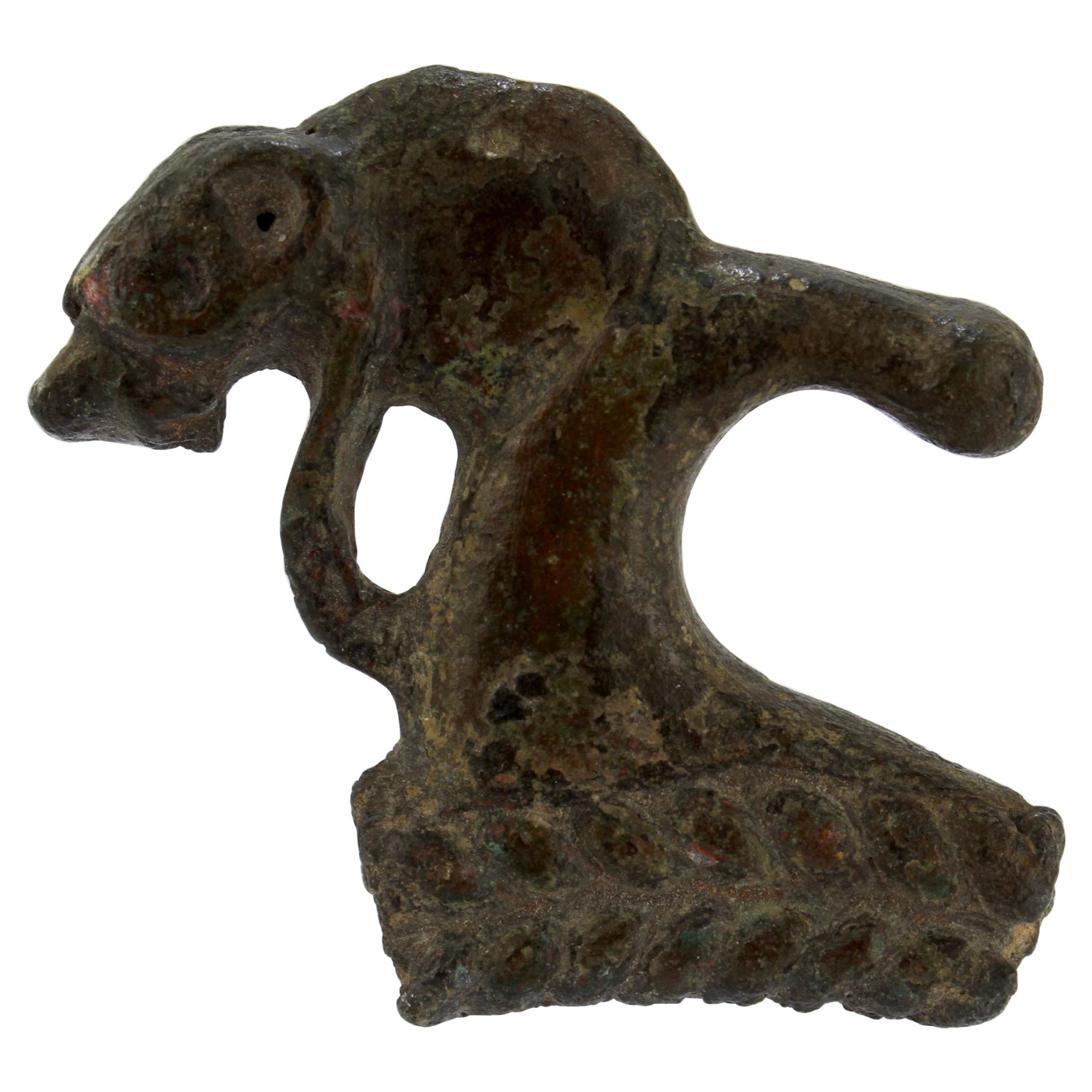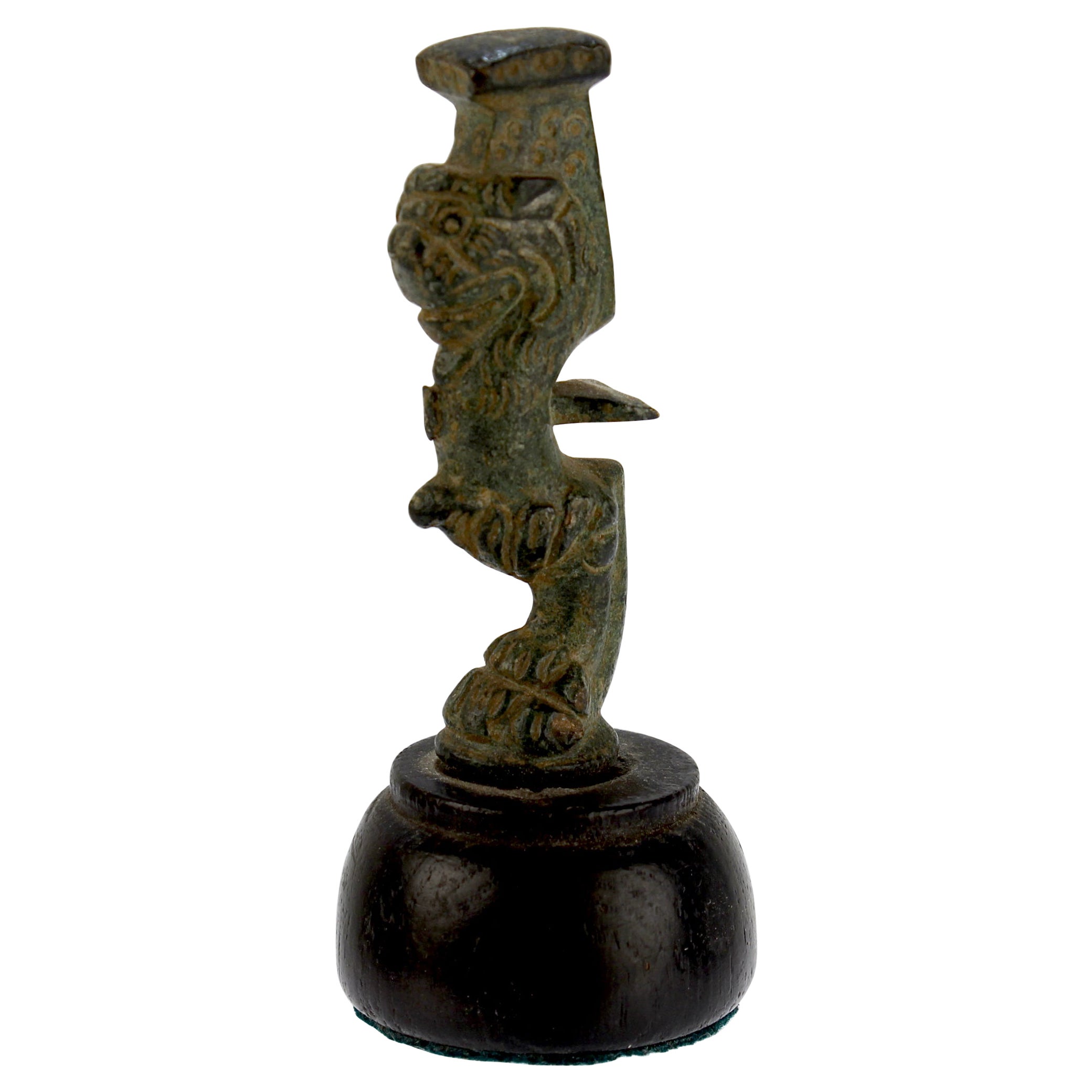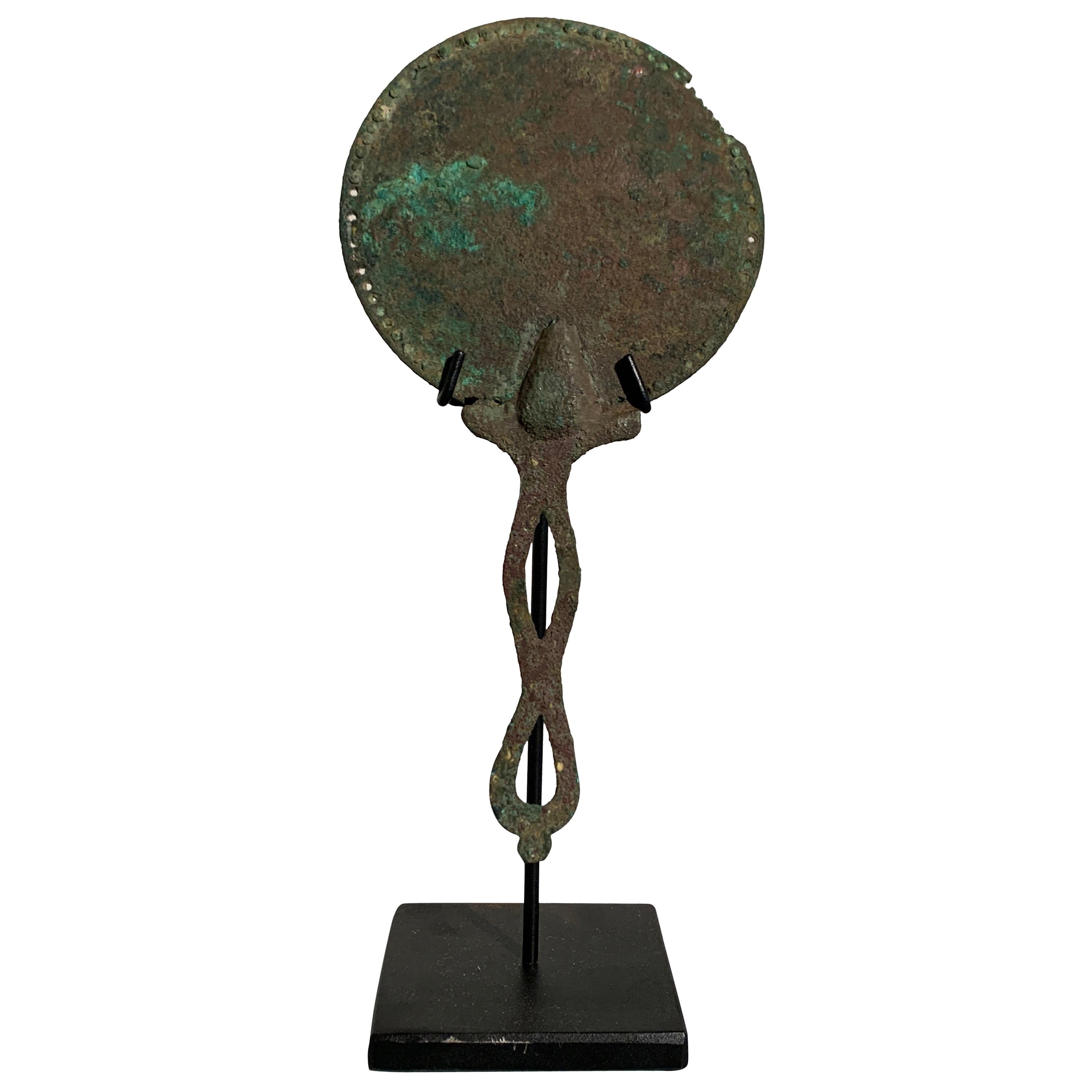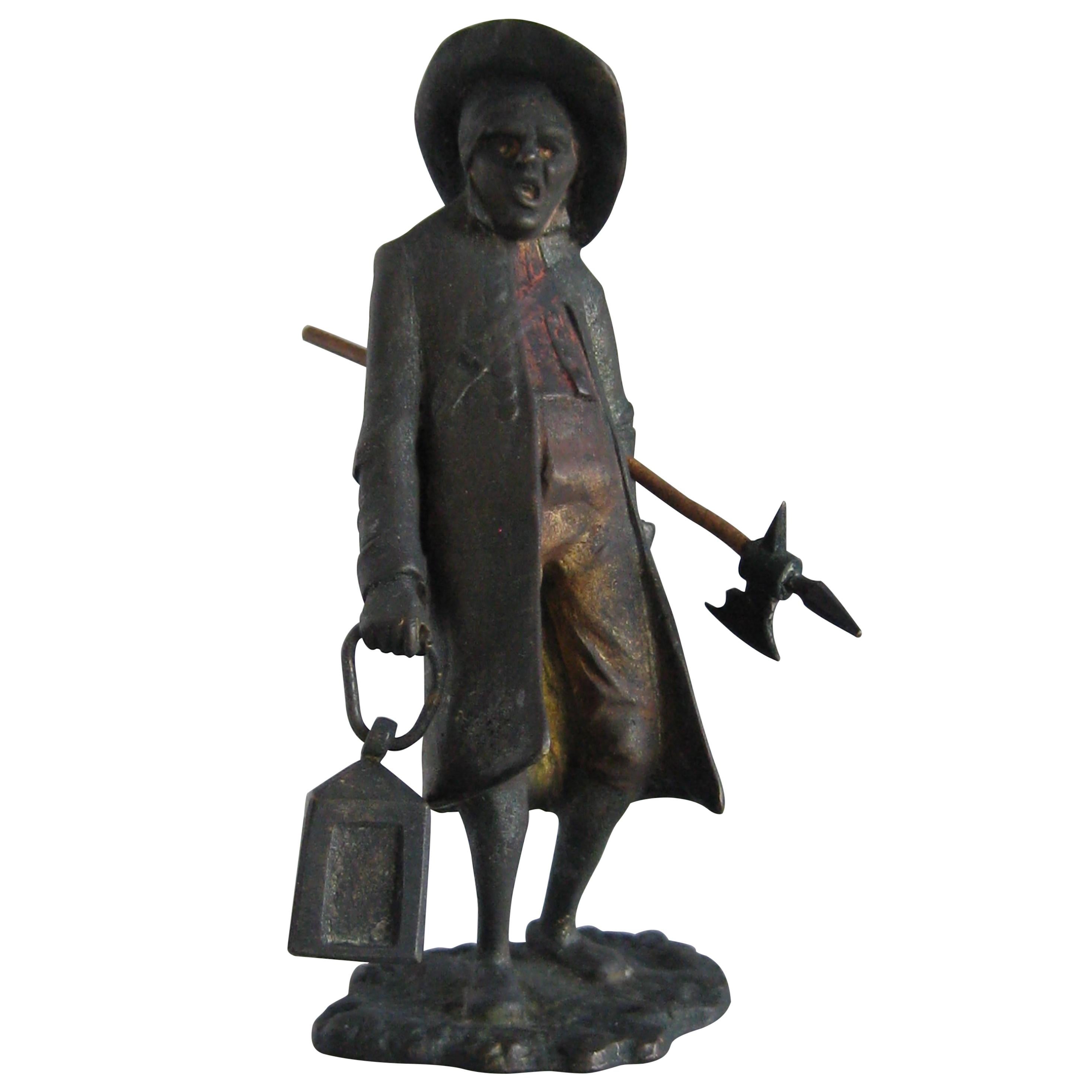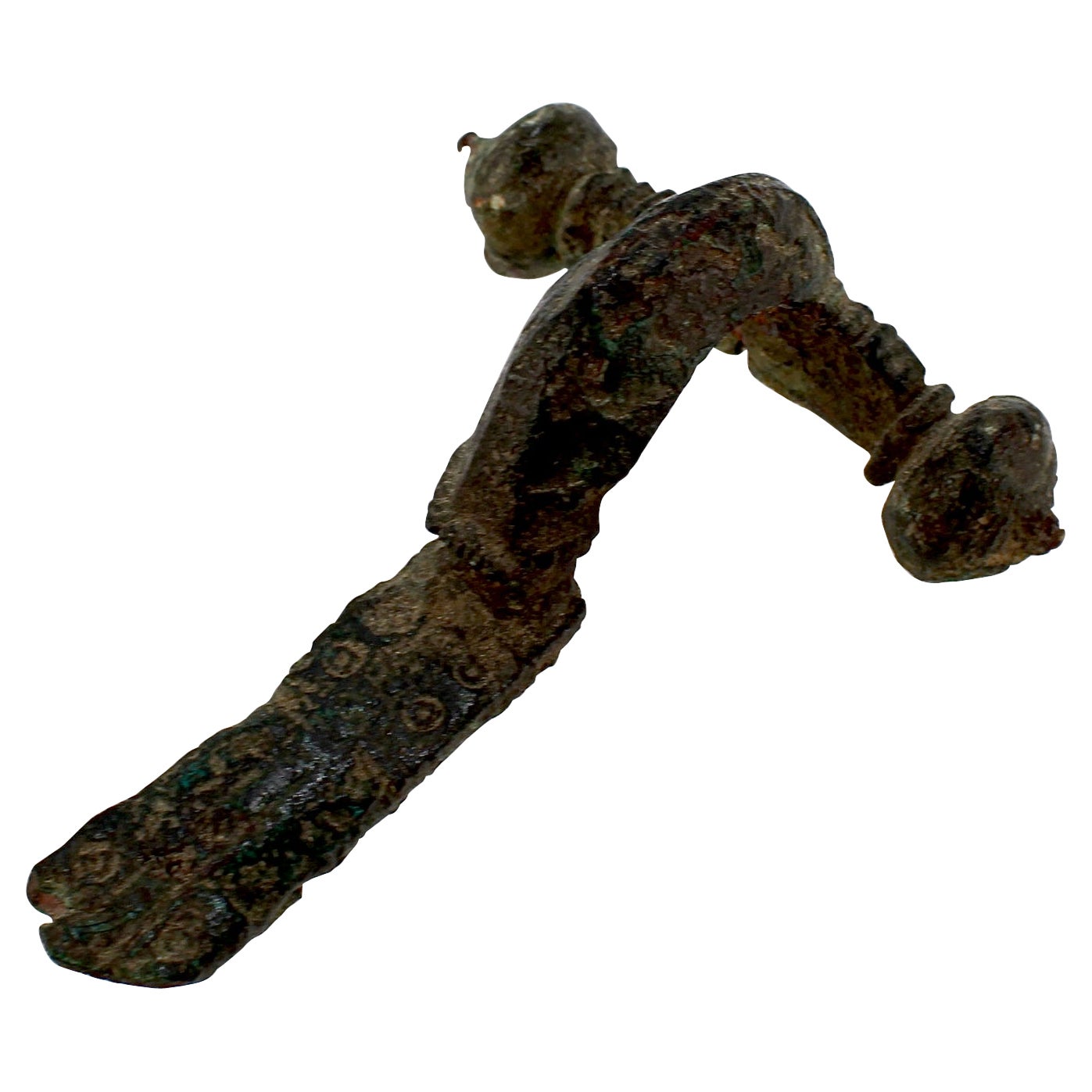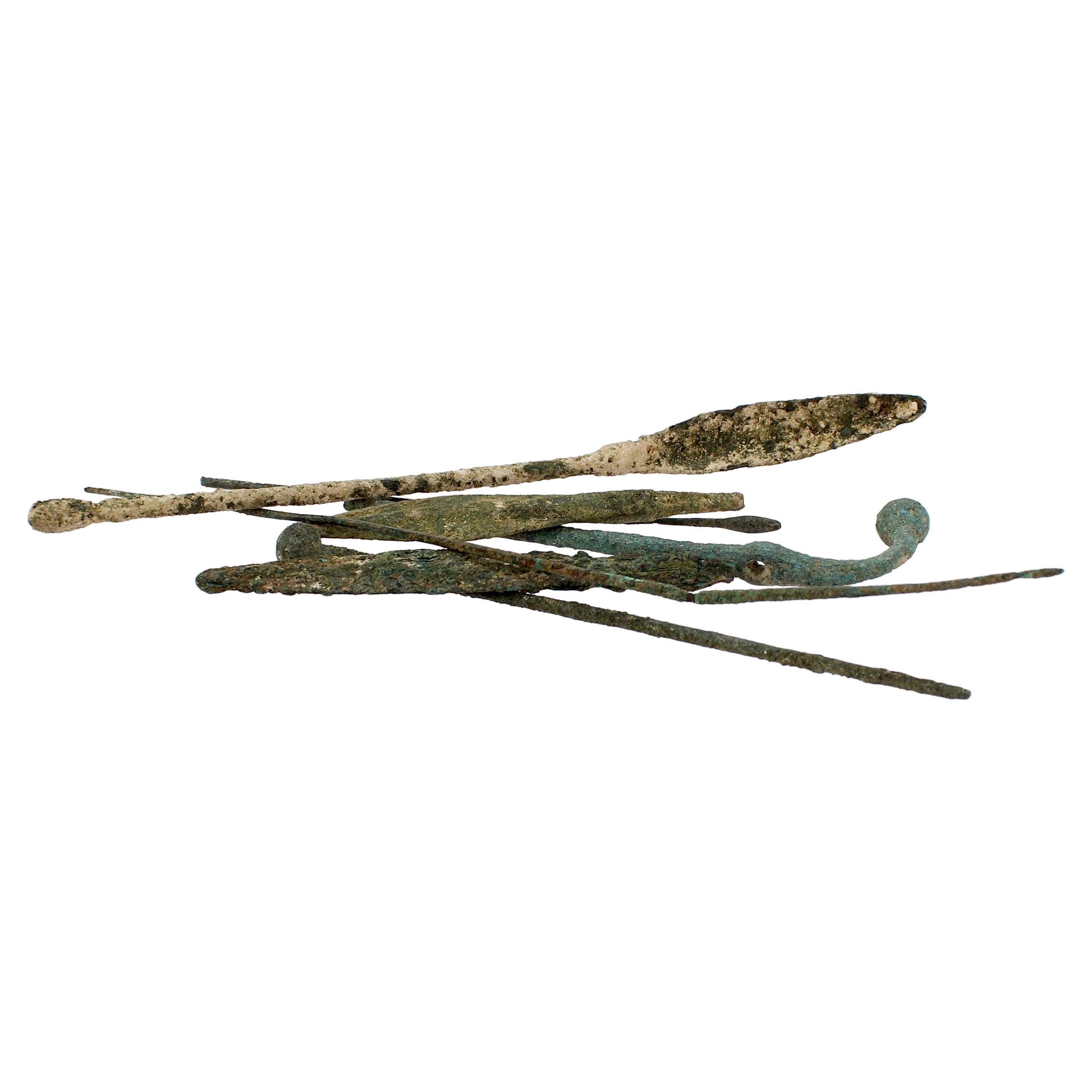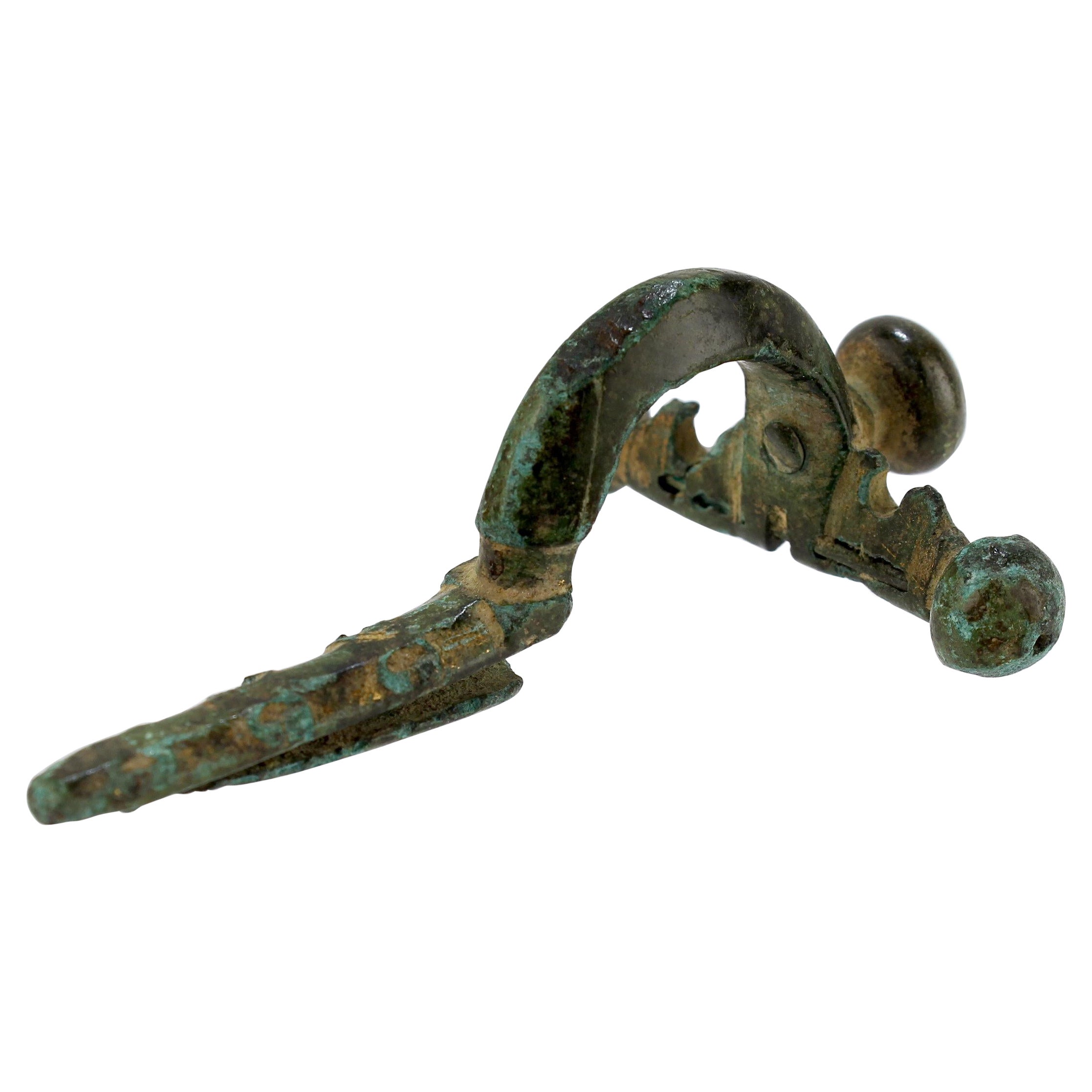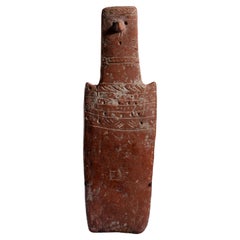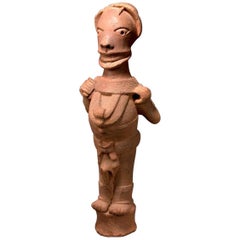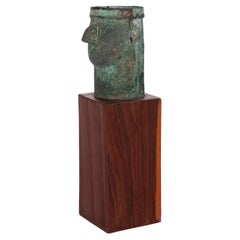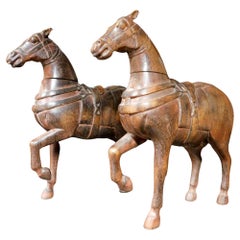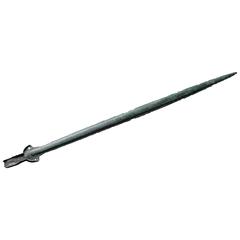
Huge Ancient Bronze Age Sword, 1400 Bc
View Similar Items
Want more images or videos?
Request additional images or videos from the seller
1 of 6
Huge Ancient Bronze Age Sword, 1400 Bc
About the Item
- Dimensions:Height: 29.5 in (74.93 cm)Diameter: 29.5 in (74.93 cm)
- Period:
- Date of Manufacture:1400 BC
- Condition:Excellent, minor loss to the end of the hilt, tip of sword consolidated. With bronze display stand.
- Seller Location:London, GB
- Reference Number:1stDibs: LU105226591123
About the Seller
5.0
Recognized Seller
These prestigious sellers are industry leaders and represent the highest echelon for item quality and design.
Established in 2008
1stDibs seller since 2014
100 sales on 1stDibs
Typical response time: 8 hours
Associations
LAPADA - The Association of Arts & Antiques DealersInternational Confederation of Art and Antique Dealers' AssociationsThe British Antique Dealers' Association
More From This SellerView All
- Late Bronze Age SwordLocated in London, GBSaint Nazaire Sword, Late Bronze Age, circa 800-900 B.C. An exceptionally well preserved Bronze Age sword, with elegant, finely incised decorations,...Category
Antique 15th Century and Earlier French Abstract Sculptures
MaterialsBronze
- Bronze Age Cypriot Plank IdolLocated in London, GBCypriot Plank Idol Early Bronze Age III - Middle Bronze Age I, c. 2100 - 1850 BC. Low fired burnished earthenware pottery with lime-filled incisions A Cypriot plank idol, an iconic form of human representation from Bronze Age Cyprus...Category
Antique 15th Century and Earlier Cypriot Abstract Sculptures
MaterialsTerracotta
- Ancient Greek Hellenistic Bronze Statuette of SatyrLocated in London, GBBeautifully cast statuette of a satyr, Greek, Hellenistic Period, 3rd-2nd Century BC, solid cast bronze The present work is a wonderful example of the finest Hellenistic style. The ...Category
Antique 15th Century and Earlier Greek Classical Greek Figurative Sculpt...
MaterialsBronze
- Ancient Greek Corinthian HelmetLocated in London, GBCorinthian helmet with Bull Horns and Lotus Flower Decoration. Archaic Period, c.550-500 BC. Cast, hammered and incised bronze. An exceptionally well preserved example of one of the most iconic ancient Greek...Category
Antique 15th Century and Earlier European Classical Greek Mounted Objects
MaterialsBronze
- Ancient Silver Celtic Tetradrachm CoinLocated in London, GBCeltic ‘Dachreiter’ Tetradrachm Minted in Eastern Europe, circa 1st-2nd Century B.C. Silver A magnificent Celtic tetradrachm of the Dachreiter (“roof-rider”) type, minted by a C...Category
Antique 15th Century and Earlier Mounted Objects
MaterialsSilver
- Ancient South Arabian Alabaster InscriptionLocated in London, GBSouth Arabian Alabaster Inscription Calcite Alabaster circa 1st century A.D. ‘’Consequently, neither white marble of Paros nor any other stone which men admire can be compared with the precious stones of Arabia, since their whiteness is most brilliant, their weight the heaviest, and their smoothness leaves no room for other stones to surpass them.’’ - Diodorus Siculus, Library of History, Book II, 52.9 This inscription, finely worked on an alabaster tablet, is a remarkably well preserved example of Ancient South Arabian script, with its distinct bold, angular forms, written in the Qatabanic dialect - that is, the dialect spoken by the people of the kingdom of Qataban, which ruled much of modern day Yemen from the 7th Century B.C. to the 2nd Century A.D. The text, which reads: ‘[... ...]sa?d and Ma?add?i- / (of the lineage) of Hawfa- / She entrusted Anb- / against any malfeasance (which would remove it) from its place’ - indicates that it likely served to commemorate a temple offering. The quality of the script, incised so neatly into the surface of the alabaster, tells us that this piece was commissioned by somebody of considerable wealth and prestige, employing a scribe of equally considerable expertise. South Arabia was known throughout the ancient world for its incredible wealth - so much so that the Romans termed the region ‘Arabia Felix’ - literally, ‘Happy, or Fortunate, Arabia.’ That wealth was built largely on the trade of spices and incense, in which the Kingdom of Qataban played a major part. According to Pliny the Elder, this was the sole country through which frankincense could be exported, first being collected in the city of Shabwa, on the South Arabian coast, and from there travelling by camel up to Gaza, to be shipped all across the Mediterranean - not only that, but all growers of myrrh across Arabia were required to give a quarter of their yield to the king of the Qatabanians. As such, the kingdom became exceedingly rich and powerful, and Pliny goes on to tell us that ‘The nations of the Larendani and the Catabani, and the Gebanitæ [...] occupy a great number of towns, the largest of which are Nagia, and Thomna (the capital of Qataban) with sixty-five temples, a number which fully bespeaks its size.’ Because of the nature of its exports, frankincense in particular - the ‘sweat of of the gods’ according to the Egyptian Book of the Dead, and perhaps most famous as one of the three gifts brought to the newborn Christ - being closely associated with the divine, South Arabia’s reputation in antiquity was as a mysterious, almost sacred, and - crucially - extraordinarily wealthy region, at the very edge of the known world; in the words of Herodotus: ‘’Enough of marvels, and yet the land of Arabia gives off a scent as sweet as if divine.’’ This inscription invokes the protection of god Anbay, the judge-oracle of the chief god ‘Amm, who he served as an attendant. Much of what we know of the religious life of the ancient South Arabians comes to us from early Islamic texts, describing what is known in Islamic scholarship as ‘Jahiliyyah’ - the age before the advent of Islam in Arabia. What comes across in much of these texts is that these religious practices placed a great deal of emphasis on sacred stones, perhaps linked to the brilliance of the alabaster which is local to the region, and which a great many of the cult-objects produced in this time are made from. Hisham ibn-Al-Kalbi’s Book of Idols records: ‘’The Arabs were passionately fond of worshipping idols [...] Whenever a traveller stopped at a place or station in order to rest or spend the night, he would select for himself four stones, pick out the finest among them and adopt it as his god, and use the remaining three as supports for his cooking-pot.’’ This inscription was once in the collection of the intrepid British-Australian travel...Category
Antique 15th Century and Earlier Yemeni Abstract Sculptures
MaterialsAlabaster
You May Also Like
- Nok Terracotta Standing Dignitary Figure, TL Tested, Nigeria Africa 500-100 BCLocated in San Pedro Garza Garcia, Nuevo LeonNok Terracotta Standing Dignitary Figure in Royal Pose. I-II Century AD. Certificate of Authenticity with TL Test and Passport from Europe. Museum Piece...Category
Antique 15th Century and Earlier Nigerian Primitive Figurative Sculptures
MaterialsTerracotta
- Ancient Pre-Columbian Inca Chimu Silver Portrait Votive Cup Vessel Peru 1400 CELocated in Portland, ORAn important Pre-Columbian Inca/Chimu silver portrait vessel cup, Peru, 1400 CE. The indigenous people of Peru created these vessels for more than domestic purposes. Rather, they were used during life & after life at funerary ceremonies that incorporated intricate religious libations and imbibing rites. To create this piece, the ancient metalsmith hammered a piece of silver into a very thin sheet, approximately the size of the finished work. Then, the artisan used fine-grained stone anvils and hammer stones...Category
Antique 15th Century and Earlier Pre-Columbian Antiquities
MaterialsSilver
- Ancient Pair of Carved Wooden Sculptures of Horses, 19th CenturyLocated in Cuneo, Italy (CN)Ancient pair of carved hardwood sculptures, depicting a pair of trotting horses, sculpted in the 19th century. They measure about W 7 x H 30 x T 30 cm.Category
Antique Early 19th Century European Animal Sculptures
MaterialsWood
- 2 Ancient Carved Stone Brown Ring Bi Disc Sculptures Iron Stands ModernistLocated in Dayton, OHPair of orange/brown stone carved bi-discs. The bi or pi disc is a flat disc with a circular hole in the center. The discs date back to Neolithic times (5,000-2,000 bc). Archeologist...Category
Antique 15th Century and Earlier Primitive Natural Specimens
MaterialsStone, Iron
- Ancient Greek Terracotta Antefix in Form of the Head of Artemis Bendis, TarantoLocated in Antwerp, BEAncient Greek mould-made terracotta antefix decorated with the female head of the Goddess Artemis Bendis. Western Greek, Italy, Taranto, early 4th century BC. Two small feathered win...Category
Antique 15th Century and Earlier Italian Classical Greek Antiquities
MaterialsCeramic
- Ancient Roman Bronze Handle or ArtifactLocated in Philadelphia, PAAn antique or ancient Roman bronze element. This piece was an element of a vase or possibly handle to something larger. It has the head of...Category
Antique 15th Century and Earlier European Classical Roman Antiquities
MaterialsBronze
Recently Viewed
View AllMore Ways To Browse
European Bronze Sword
Baltic Exchange
Caste Designs
Bronze Hilt
Bedroom Lantern
Sputnik Pendant Chandelier Opaline Glass
Wine Room Chandelier
60s Bamboo Dining
Narrow Pendant Light
48 Ottoman
Mid Century Octagonal Side Table
Porcelain Tea Service Hand Painted
Circular Wall Panel
Pair Of Glass Sconces Grey
Antique Mirror Red Gold
Large Round Lacquer Coffee Table
Pair Of Fagerlund Lamps
Pantone Table

